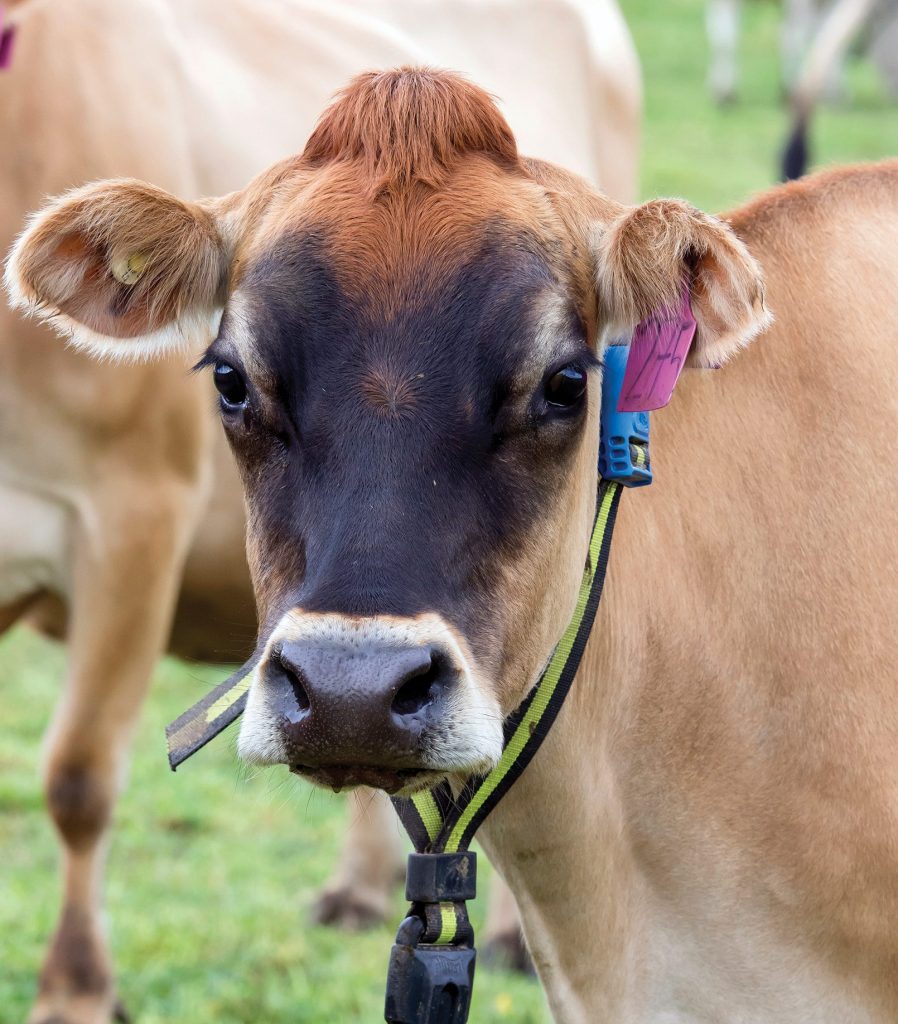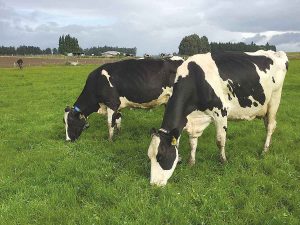
The adoption of technology, especially behaviour monitoring collars, is ramping up at an incredible pace across New Zealand.
The Veterinary Centre (Waimate and Oamaru) has been lucky enough to be at the epi-centre of a collar explosion, with more than 30% of our farms “tech-ing up”.
This has given us a first-hand seat to observe the ups and downs that go alongside new tech adoption, and then latterly to help ensure our farmers can leverage the true potential of the data and technology they’ve paid for.
SO WHAT DO COLLARS BRING TO YOUR FARM?
Many farmers initially buy collars for “heat detection” and “health”. These are the easy wins – they offer unsurpassed heat detection, save time on the stand picking cows over mating, and pick up sick cows early in the disease process.
On some farms, especially where heat detection was a major limiting factor to the farm’s reproductive performance, we have seen huge initial gains. However, many have then fluctuated over following seasons, with no great improvements. They have removed heat detection as a factor in their mating performance, but haven’t changed anything else in their system.
As an industry, we now need to take the next step in harnessing the data from these systems to make better real-time and retrospective decisions.
MAKING A DIFFERENCE IN REAL-TIME
One of the key opportunities posed by collar technology is the ability to monitor and intervene live, before it is too late. Instead of getting to the end of mating and finding out that things went poorly, the target should be building in effective monitoring and intervention steps throughout the season to prevent the ship from crashing in the first place.

We have been working with Allflex SCR Collars within our practice over the past three seasons to develop and validate a set of real-time reports that we can use with our farmers to make some meaningful improvements to their farm performance.
In a series of articles we will outline some specific examples of where you can monitor, track changes, and find solutions. In the next three topics we will focus on retrospective repro reviews (in late autumn), monitoring transition performance (in winter), and finally tracking pre-mate and mating progress (in spring).
In this first article we will outline an example of a monitoring tool (for the post-calving period), the exciting opportunities and why our clients have embraced this new technology to improve reproductive performance.
An example is set out below of an application of real-time on-farm monitoring around the post-calving period that our practice has developed using the above steps.
CALVING TRANSITION – IT’S CRITICAL!
During transition we found a large variation between farms with how fast a cow recovered (as demonstrated by rumination rates) after they calved. In the early calving period rumination rates (in general) reflect the amount of feed a cow is voluntarily eating. If the level is low they will be consuming less energy, and therefore be in a greater negative energy balance. This causes them to mobilise fat, causing an increased loss of BCS as well as negative health outcomes such as higher endometritis rates, ketosis, delayed cycling, and reduced first service conception rate.
We were also able to demonstrate that cows that ruminated for more minutes in the first seven days had higher in-calf rates. Finding a way to monitor how well cows recovered was therefore a critical step in adding value for our farmers.
BUT HOW CAN YOU MONITOR TRANSITION?


In the first graph (above) you can observe the rumination rates of all cows on Day 0, Day 1, Day 2, Day 3 etc after calving. In building a real-time monitoring tool we essentially wanted to recreate this graph live, giving us an understanding of what the recovery looked like on any day. Figure 2 is a screenshot of the report we developed alongside Allflex and set up on our farmers’ systems to enable them to monitor this recovery in real time (now available as part of an Elite Package offering nationwide Allflex Heatime customers).
It breaks down the cows into groups based on days calved (from 0 to 20 days), giving the average daily rumination of that group, as well as the three-day change. In the example below there are 16 cows that calved today (day 0), and they had an average daily rumination of 293 minutes/day.
BUT WHAT IS A GOOD TRANSITION TARGET?
Being able to monitor the rumination recovery is great, but how do you know if your level is good or bad??
To build targets we benchmarked the data from about 30,000 cows in our practice to understand what levels farms were achieving. The recovery graph below shows the top vs bottom quartiles in our practice.

From this data set we have been able to give our farmers the following target table for each day post calving. The great thing about this target is that we know that it is achievable – our top 25% of farms are already there, and many others don’t need to make too much change to reach the line.

Being able to monitor the rumination recovery, but how do you know if your level is good or bad?? To build targets we benchmarked the data from about 30,000 cows in our practice to understand what levels farms were achieving. The recovery graph below shows the top vs bottom quartiles in our practice.
BUT ARE THERE PRACTICAL SOLUTIONS?
Finally, it’s all good and well knowing you haven’t reached a target, but you need to be able to do something about it. To this end we have become very involved with our clients in helping them problem-solve ways to get closer to the target rates.
Some of the easy wins (and ones you can easily look to apply to your farm, whether you’ve got collars or not) were:
-Milking frequency – cows milked OAD (once-a-day) post calving for ~ 10 days typically had better rumination recoveries and higher pre-mate cycling rates
-Multiple eating opportunities – offering cows at least 3 new feeding opportunities improved recovery (i.e grass break in morning and evening, silage at a separate time of the day)
-Ensuring residuals were above 1800kg drymatter (DM)
-Adequate lime flour/calcium supplementation
-Ensuring feed offered allows for the variability of increasing mob sizes.
INTO THE FUTURE
We are in the infancy stage of how we interact with collars and collar data. A huge amount is to be gained over and above the core offerings of “Mating and Health” if we are prepared to look for solutions that fit the seasonal NZ market.
In the coming series we will look to demonstrate key opportunities to get the most out of the technology on your farm! Using the Allflex SCR Collar system we’ll demonstrate some key opportunities and take-home messages for the critical periods of transition, pre-mate feeding, and mating review.
Ryan Luckman is a Veterinarian with an interest in Epidemiology at the Veterinary Centre in Waimate. Email: ryan@vet111.co.nz






















